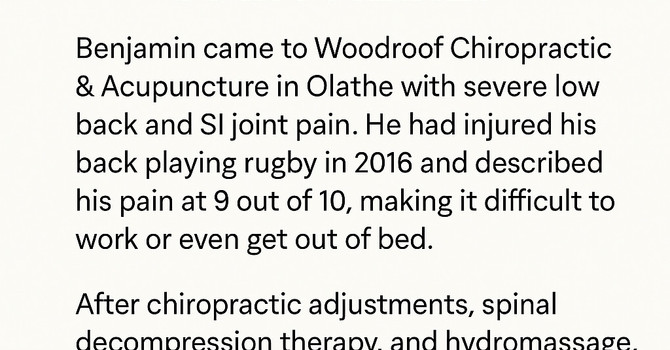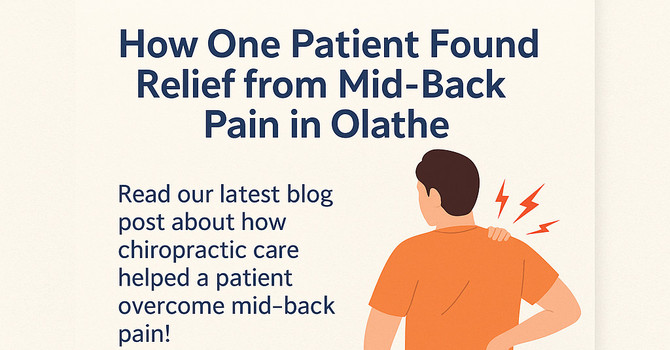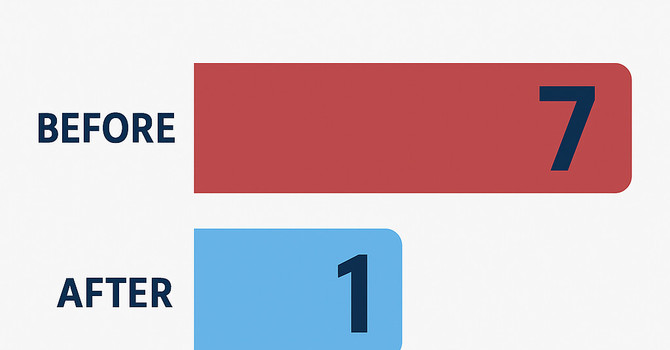How to manage your back pain at home or work, your Olathe Chiropractor explains here:
A powerful concept in the management of chronic back pain: "desensitizing" the patient's pain. This approach is rooted in understanding the relationship between movement, pain, and the nervous system.
Understanding Pain Sensitization
Pain sensitization occurs when the nervous system becomes overly responsive to stimuli that would not normally cause pain. This heightened sensitivity often results from repeated exposure to painful movements or postures. Over time, the body develops a lower threshold for pain, meaning even minor activities can trigger significant discomfort. Breaking this cycle of sensitization is crucial for long-term pain relief. Desensitizing the nervous system involves reducing the factors that contribute to this heightened sensitivity.
The Desensitization Process
The first step in desensitizing pain is identifying and eliminating the specific movements and postures that aggravate the condition. This process, known as "movement hygiene," requires patients to become aware of the activities that trigger their pain and to modify or avoid these activities to allow the nervous system to calm down. Once the offending movements are minimized, we introduce controlled, pain-free movements to help the patient regain confidence in their body's ability to move without pain. This gradual reintroduction of movement helps to reset the nervous system's sensitivity, reducing the pain response.
An analogy I like to use: Think of it like a "stubbed toe" — the first time you stub your toe, it hurts, but after a few moments, the pain lessens significantly. Now, imagine stubbing your toe every day. Sooner or later, the smallest things will aggravate it, and your toe will always be in pain. To heal, do your best to avoid anything that might aggravate your condition. However, each day, I want you to gradually push your limits on those aggravating factors. Don’t exceed your "tipping point," but gently test your boundaries. For example, if walking for more than 10 minutes increases your pain, aim to walk for no more than 8 minutes, three times a day — a 20% decrease. If standing still for more than 10 minutes triggers your pain, at the 8-minute mark (a 20% decrease), either start walking or sit down. Avoiding your triggers increases your chances of avoiding pain. Every day, push yourself slightly, but don’t cross the tipping point of your trigger.
Conclusion
Your chiropractor in Olathe is an expert in chiropractic and pain. Desensitizing pain is a methodical process that requires patience and consistency. By eliminating painful triggers and reintroducing safe, controlled movements, patients can reduce their pain sensitivity and take meaningful steps toward long-term recovery.
Dr. Ike Woodroof
Contact Me



